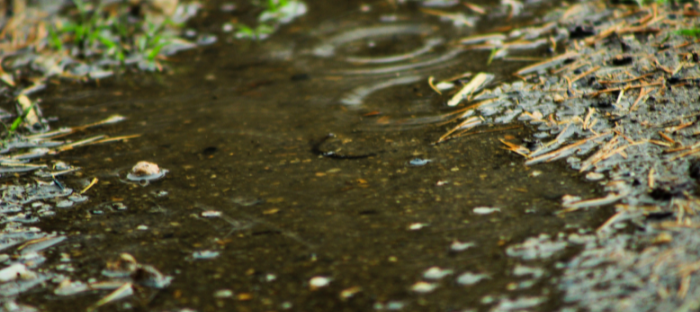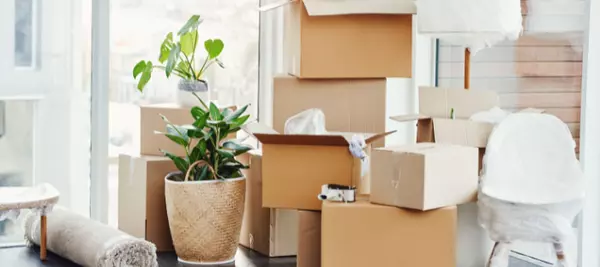How Rain Damages Your Home
How Rain Damages Your Home.

A lot of people love rain. It's calming, it makes plants almost glow with greenery in the spring, and it's a great reason to curl up with a book in hand.
But everyone hates wood rot, standing water, and mould growth.
Every homeowner should be aware of how well their property deals with potential rain damage. Heavy rain should be something a well-maintained house can withstand with no issues but if it's been a long time since you last looked at whether your home is properly sealed to prevent water damage, it's time for a little catch-up session.
Rain damage within the home.
Mould.
Rainwater can slowly build up within your walls even from a small leak. The reason why you don't want water entering your home, especially in places where you cannot see it, is that the ambient moisture creature is the perfect environment for mould growth.
Mould is dangerous because it can cause respiratory problems and other health issues. If you have young kids or someone in the home with conditions like asthma, mould can create and worsen lasting health problems. Everyone is cautious after a flooding or a big issue with the roof but mould spreads fast even with just a little bit of water.
Sagging ceilings.
This is a crisis situation that will sometimes only reveal itself during heavy rains. Water leakage can build up in the ceiling boards and while that water may drain off somewhere else during light rainfall, heavy rains will cause a build-up.
In extreme circumstances, the bubble created in the ceiling will grow and grow until it bursts. No one wants to clean that up. It's a mess of debris, stagnant water, and bits and pieces of whatever ended up stuck there.
If tackled early, sagging ceilings can be dealt with to prevent costly damages in the future. They're alarm bells that water leaks might be impacting your home in ways you didn't envision.
Bugs love stagnant water.
Stagnant water is a breeding ground for all sorts of bugs, so it's important to take care of any water leakage immediately.
Some of the most common bugs that can be found in stagnant water are mosquitoes, fruit flies, and cockroaches. All three of these bugs carry diseases, so it's best to take care of any leaks as soon as possible.
An infestation of any of these bugs can create a nightmare in all weather conditions but the root cause can be found in rainwater pooling in between the walls.
Foundation damage.
This one is very dangerous. Of all kinds of rain damage possible, this can cost homeowners thousands to fix - at best.
It doesn't matter if the home's attic is intact, rainwater can still make its way down to your home's foundation and destroy it slowly. Water can erode parts of the home's foundation, or it can make the soil around the lowest points of the house expand which applies enough pressure to create foundation cracks.
Rainwater creating pools around the house.

Having long-lasting wet patches around your home after rainfall should sound the alarm bells.
The stagnant water can create bug nests, but more pressingly the water can seep underground and create those expensive-to-fix foundation cracks.
Your first line of defence when it comes to water damage like that is a way to direct water away from the home. Usually, that means gutters; angled properly and well-maintained.
Small things like twigs and pine needles can collect in the gutters during dry periods and then even properly installed gutters can have their downspout clogged up.
Rainwater damage doesn't just mean that you have to protect your roof or the house's siding but it means looking after the property as a whole.
What are the problem areas with rain?
Unfortunately, when it comes to pinpointing rain damage to house sections, there's no quick and easy way to do it unless there is some visual indicator.
Still, it pays off to pay special attention to certain parts of the home during routine maintenance. Your basement should be a dry environment, unusually high levels of moisture in the air can indicate a problem further up.
Doors, windows, and other openings can also be cause for concern. If you notice that the siding of your home is getting more degraded around a windowsill or a doorway then that means that something is building up in the walls of the house.
During heavy storms, gutters can get misaligned and their downspout point toward the home instead of away from it - creating a situation where what was supposed to help is actually making the problem worse.
The roof, left last here because most people would look there first, is definitely an area that you want to have good control of. Water damage is insidious because of how much confidence we have in things like our house's roof.
In reality, a good roof requires yearly maintenance and a good look every six months at the very least. Mould growth in attics is common and often overlooked. While it can be annoying, it is a good practice to keep the attic in good order and not let clutter overtake the space. Clutter makes quick check-ups of the walls tough for anyone.
What can you do to fix things?

Other than routine inspections, you can save money by doing a few simple things.
Planting trees, far from the house's basement or foundation, and smaller plants are an amazing long-term solution. The plants will soak up rainwater and cool off your home in the summer.
If surface water around the house is on an incline then a good idea would be to build an exterior french drain. These are basically drains that line your house's perimeter and redirect the water in another direction to prevent it from affecting your home.
If you find an exposed leak or crack, you could use some foam sealant as a quick fix. However, if you suspect deeper damage, more immediate damage, it's best to contact a professional. Construction issues may have left you with internal issues that could require heavy-duty fixes.
View All Homes For Sale in Greater Vancouver >>>
About Search Home Listings
SearchHomeListings.ca has simplified the home buying and selling process by giving you superior tools with up-to-the-minute information including active homes for sale, sold homes, market reports, and a home valuation tool! We have a team of success managers on standby to support you with setting up your saved home search and agents ready to take you out on a tour. Tap into our industry experts from inspectors, to contractors to interior designers to provide you with the best prices and service possible. Everyone attached to our website has been rigorously vetted and is made up of caring, knowledgeable professionals that work tirelessly to help you to make your home buying experience as stress-free as possible. Contact us today to see how we can help!
Sites We Follow
Categories
Recent Posts










